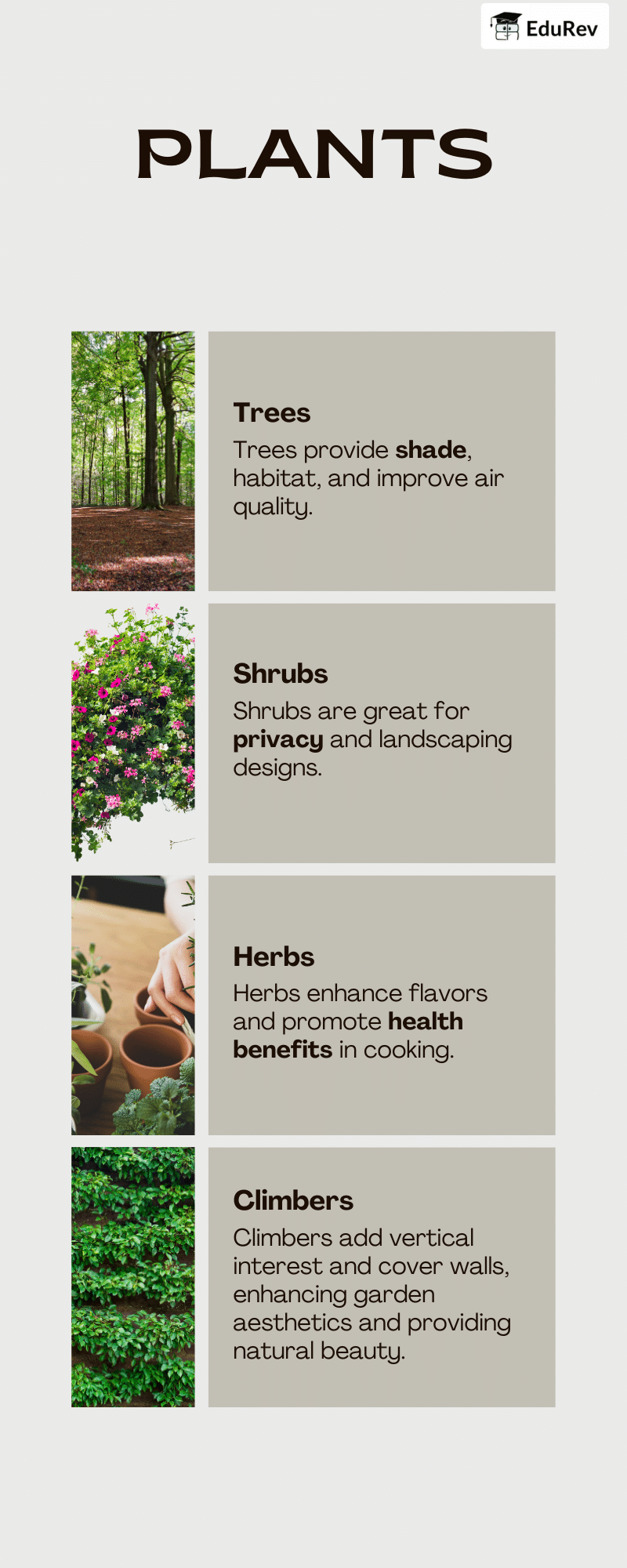Class 2 Exam > Class 2 Notes > EVS for Class 2 > Poster: Plants
Poster: Plants | EVS for Class 2 PDF Download

The document Poster: Plants | EVS for Class 2 is a part of the Class 2 Course EVS for Class 2.
All you need of Class 2 at this link: Class 2
|
29 videos|304 docs|48 tests
|
FAQs on Poster: Plants - EVS for Class 2
| 1. What are the basic needs of plants for growth? |  |
Ans.Plants require sunlight, water, air, nutrients, and suitable temperatures to grow. Sunlight is essential for photosynthesis, which allows plants to convert light energy into chemical energy. Water is vital for transporting nutrients and maintaining cell structure. Air provides carbon dioxide, which is necessary for photosynthesis. Nutrients, such as nitrogen, phosphorus, and potassium, are essential for various plant functions. Lastly, suitable temperatures ensure optimal metabolic processes.
| 2. How do plants perform photosynthesis? |  |
Ans.Photosynthesis is the process by which plants convert light energy into chemical energy. It takes place primarily in the leaves, where chlorophyll (the green pigment) absorbs sunlight. During photosynthesis, plants take in carbon dioxide from the air through small openings called stomata and absorb water from the soil through their roots. Using sunlight, they convert these raw materials into glucose (a type of sugar) and oxygen, which is released as a byproduct.
| 3. What are the different types of plants? |  |
Ans.Plants can be categorized into various types based on their characteristics. The main categories include flowering plants (angiosperms), non-flowering plants (gymnosperms), ferns, and mosses. Flowering plants produce seeds enclosed within fruits, while non-flowering plants have seeds that are not enclosed. Ferns reproduce via spores instead of seeds, and mosses are small, non-vascular plants that also reproduce using spores and typically thrive in moist environments.
| 4. How do plants adapt to their environment? |  |
Ans.Plants adapt to their environments in several ways to survive and thrive. For instance, desert plants, like cacti, have thick, waxy skins and deep roots to conserve water. In contrast, plants in wetlands may have specialized structures, such as aerial roots, to help them breathe in waterlogged conditions. Additionally, some plants change their leaf sizes and shapes to optimize sunlight capture based on their habitat.
| 5. Why are plants important for the ecosystem? |  |
Ans.Plants play a crucial role in ecosystems as they produce oxygen through photosynthesis, which is essential for most living organisms. They also serve as the primary producers in food chains, providing energy for herbivores and, in turn, for carnivores. Furthermore, plants contribute to soil health, prevent erosion, and support biodiversity by providing habitats for various species. Their presence is vital for maintaining ecological balance.
Related Searches
















